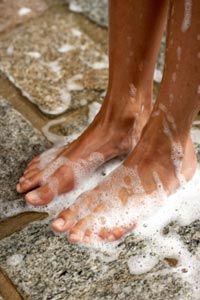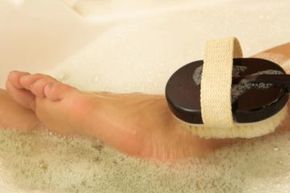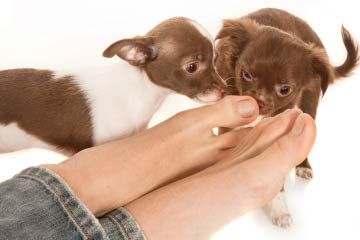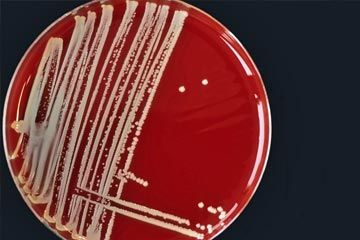Feeling overworked and underappreciated? Think how your feet must feel. Each one is an engineering marvel: 26 bones, 33 joints, and literally hundreds of muscles, tendons, and ligaments, sharing a load equal to a few hundred tons of pressure every day; if you're an active person, even more [source: Illinois Podiatric Medical Association].
And how do we repay them? We suffocate them in socks and shoes, splash them in the shower, and then start the whole process over again. Rarely do we show them the love.
Advertisement
It's no wonder they raise a stink -- literally -- from time to time. Feet also contain 250,000 sweat glands, more per square inch than any other part of the body [source: ePodiatry]. Call it the foot's revenge. Or bromhidrosis (a Greek word combining stink and sweat), as a podiatrist does.
By any name, sweaty, stinky feet result from natural but inconvenient biological functions. Like the rest of the body, feet sweat to prevent overheating, and their surface is home to thriving colonies of bacteria. When these bacteria break down the leucine, an amino acid in sweat, one product is isovaleric acid -- which not coincidentally, also adds a pungent aroma to certain varieties of cheese.
Ordinarily, bromhidrosis can be controlled by paying extra attention to basic hygiene. Wash feet well when bathing; running shower water or a soak in the tub alone may not remove bacteria-harboring dirt. Dry them thoroughly, especially between the toes, and dust with talcum powder. Powder cakes on wet feet, creating a warm, moist "mud" where bacteria flourish.
Since bacteria are part of the problem, you'd think antibacterial soap would be part of the solution. That's not always the case, however. Many store-bought antibacterial cleansers contain Triclosan. Although it's a proven germ killer, no studies show that the low concentration in these products makes them any more effective at controlling bacteria than their regular versions.
Some stubborn cases of stinkfoot resist ordinary measures. On the next page we discuss strategies for vanquishing persistent bromhidrosis.
Advertisement




